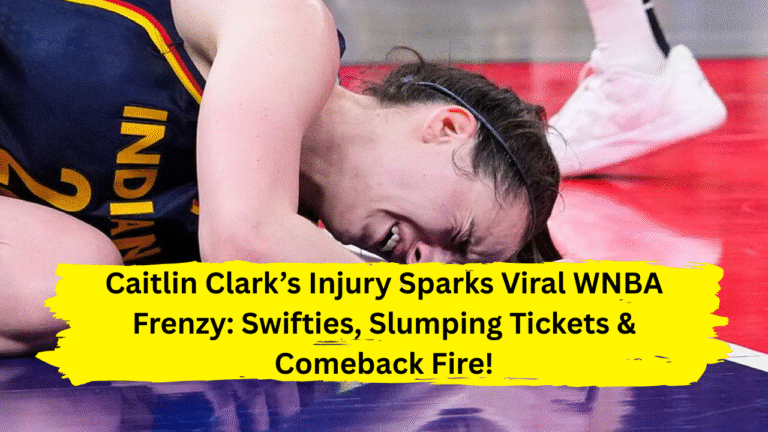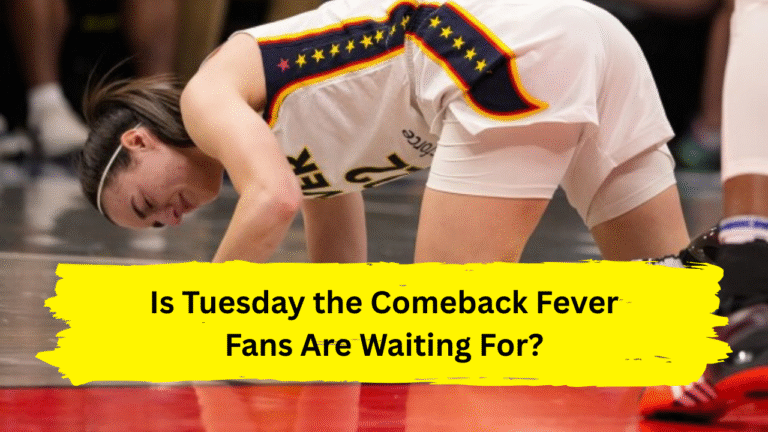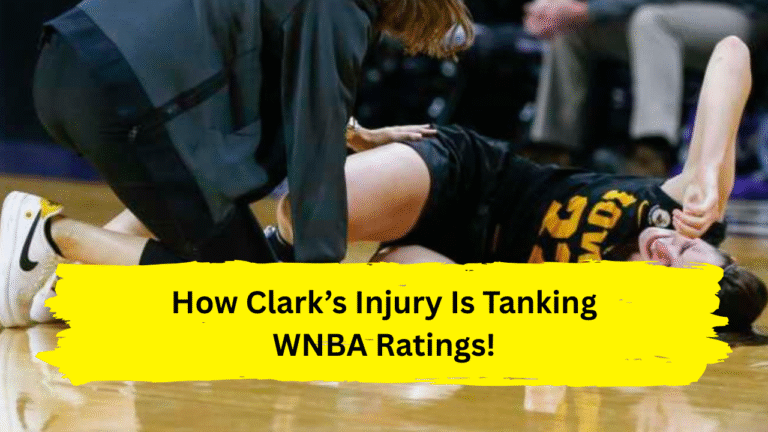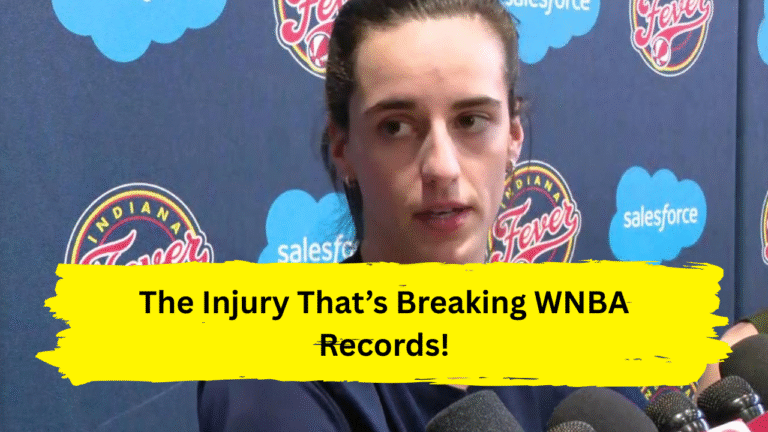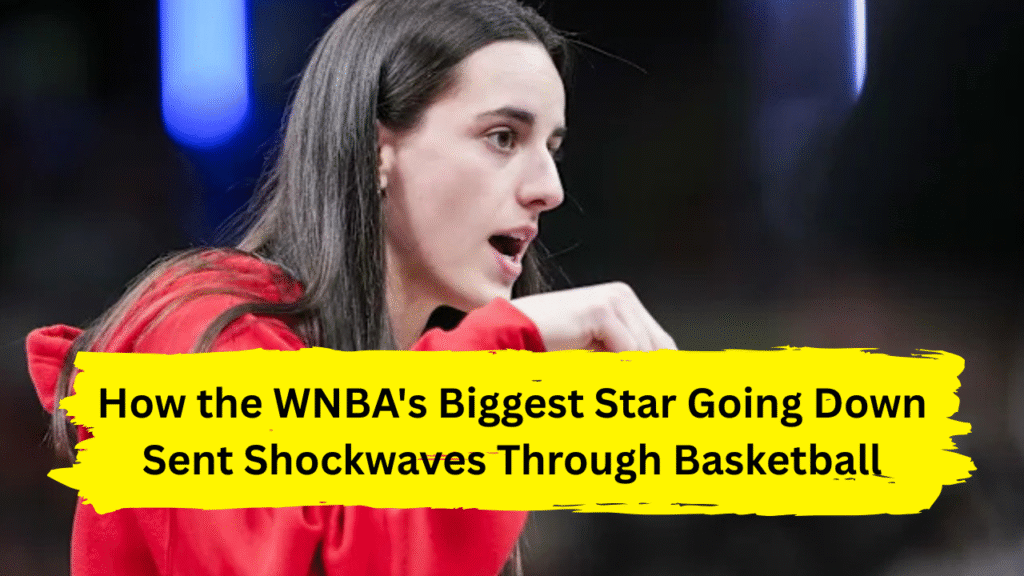
The moment Caitlin Clark limped through the tunnel after Indiana’s May 24th clash with New York, a chill swept through the WNBA. Within hours, ticket prices for the Fever’s next home game plummeted 71%. Sportsbooks saw betting interest nosedive by 50%. And 1.19 million viewers suddenly vanished from TV screens. Caitlin Clark’s quad injury didn’t just sideline a player—it exposed the adrenaline-and-commerce ecosystem of a league riding the wave of her stardom .
For the first time in her basketball life—from childhood gyms to Iowa’s packed arenas to the Fever’s gaints—Clark faced a reality she’d never known: watching from the bench. “I’ve never been a patient person,” she confessed days later, her voice threaded with frustration. “This is definitely testing me” .
The Injury That Silenced a Phenomenon
Clark felt the twinge early against the Liberty. Adrenaline masked it during the game, but the MRI didn’t lie: a left quad strain, sidelining her for a minimum of two weeks. “That gave me the result I didn’t want to see,” she admitted. The timing couldn’t be crueler. She’d been averaging 19 points, 9.3 assists, and 6 rebounds—orchestrating the Fever’s offense with the command of a conductor .
Without her, the Fever stumbled. They dropped two of three games, their offense sputtering like an engine missing its spark plug. Coach Stephanie White scrambled, inserting veteran guard Sydney Colson into the lineup and signing emergency hardship player Aari McDonald. Though McDonald provided a jolt of energy (“I’m in survival mode right now. I gotta eat,” she quipped), the cohesion Clark enabled evaporated. Defensive efficiency cratered, allowing nearly 10 more points per 100 possessions .
Clark’s absence wasn’t just tactical; it was spiritual. Teammates missed her voice in huddles. Fans missed her audacious 30-footers. And Clark? She missed practice. “Not a ton of people always enjoy coming to practice every single day,” she mused, “but that’s something I really enjoy.” Her sideline antics—bouncing balls into the bench, drawing laughs from coaches—hinted at a competitor itching to return .
The Economic Earthquake
If anyone questioned Clark’s value as the WNBA’s economic engine, the data struck back like a rebuttal.
- Ticket Markets Imploded: Resale prices for the Fever’s June 16 game against Chicago collapsed by 71%. Road games felt the sting too—Washington’s arena saw entry-level tickets drop 47% overnight .
- TV Viewership Tumbled: The Fever’s broadcast against Connecticut, though still drawing 850,000 viewers (ION’s largest audience this season), represented a stark decline from Clark-era numbers. Games without her averaged just 357,000 viewers—a 40% free fall from previous national broadcasts .
- Betting Flatlined: Caesars Sportsbook reported over a 50% drop in Fever-related wagers. At BetMGM, interest in Indiana’s games withered by 37%. Clark wasn’t just moving merchandise; she was moving markets .
The message screamed from spreadsheets and empty seats: the WNBA’s record-breaking momentum—22 million-view games this season, dwarfing the previous high of 15 in 1997—rested on the shoulders of a 22-year-old with a balky quad .
A Player in the Shadows
Clark’s exile became a masterclass in restless observation. Stationed beside coaches during games, she dissected coverages, relayed insights to teammates, and yes, still jawed at referees. “You see things from a different perspective,” she realized. “I’m trying to be that connector between the coaches and my teammates” .
But the emotional toll seeped through her pragmatic veneer. This was a player whose entire identity thrived on competition—on the sweat-soaked grind of practice, the roar of big moments. Sitting felt like a betrayal of her instincts. “The hardest part is just not being able to be involved,” she said, the ache palpable. “I really enjoy coming out here and competing every single day” .
Her patience frayed, but her discipline held. She refused to rush back, acknowledging the long-term stakes: “It’s just not worth it.” The Fever’s ambitions—a playoff push, a Commissioner’s Cup run—depended on her health. A setback could doom them .
The WNBA’s Star-Power Paradox
Clark’s injury ripped open an uncomfortable truth: the league’s meteoric growth is disproportionately tethered to a handful of superstars. When Clark plays, she lifts opponents too—ratings surge for every team she faces. When she sits, the spotlight dims league-wide .
This dependency sparks debate. Should the WNBA diversify its marketing beyond Clark, A’ja Wilson, and Angel Reese? Absolutely. But as guard Sydney Colson noted, Clark’s gravitational pull creates rising tides: “Highlighting the biggest names helps everyone” .
The challenge is structural. The WNBA’s media deals, sponsorship surges, and cultural relevance—while growing—remain fragile. Clark’s injury revealed how quickly interest wanes when stars vanish. For a league eyeing expansion and billion-dollar valuations, this isn’t a blip; it’s a warning .
The Light Ahead
Optimism flickers. Clark progressed faster than expected, eyeing a possible return against Atlanta on June 10. “It could be a possibility,” she teased, though caution ruled her tone. If not, the June 14 Liberty rematch looms as a circled return .
Her re-evaluation this weekend will ripple beyond Indiana. Arenas will restock with fans. Sportsbooks will ping with renewed action. Cameras will find her, even in warmups, because Caitlin Clark isn’t just a player—she’s an event .
The Deeper Lesson in a Strained Quad
Caitlin Clark’s quad injury was more than a medical report; it was a stress test for the WNBA’s ecosystem. The results were unequivocal: her absence left a crater in engagement, revenue, and on-court magic. Yet within that vulnerability lies clarity. The league’s superstars are its most combustible fuel—and protecting them, marketing them, and building sustainable narratives around them isn’t optional; it’s existential .
As Clark rehabbed, signing autographs for heartbroken fans, one truth crystallized: the WNBA’s future isn’t just about cultivating new stars. It’s about ensuring its brightest lights stay on the floor, where they can ignite the game for everyone. Her return won’t just heal a quad—it will restart a heartbeat .
Also Read: Latest Trending News

